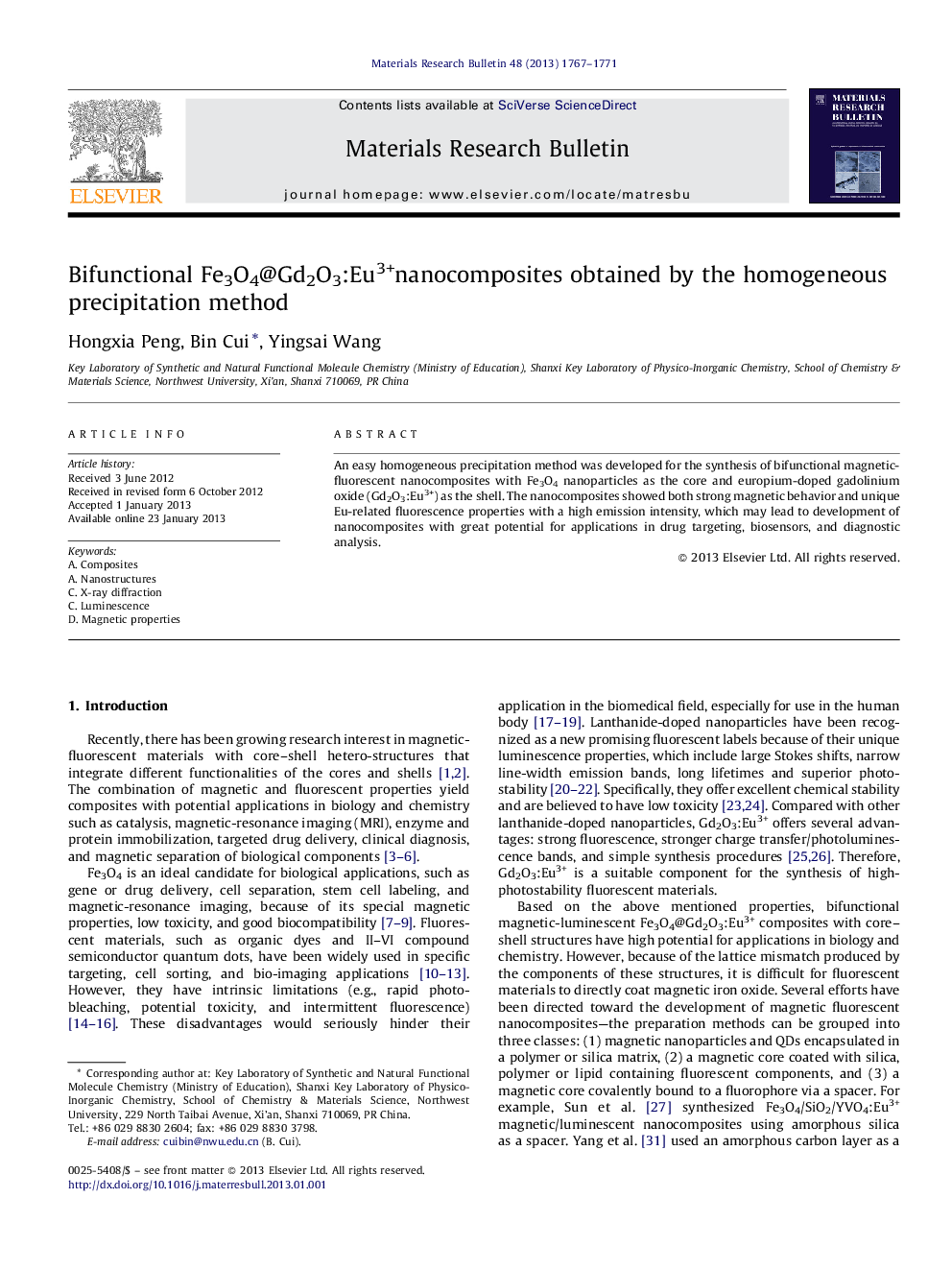| Article ID | Journal | Published Year | Pages | File Type |
|---|---|---|---|---|
| 1489183 | Materials Research Bulletin | 2013 | 5 Pages |
An easy homogeneous precipitation method was developed for the synthesis of bifunctional magnetic-fluorescent nanocomposites with Fe3O4 nanoparticles as the core and europium-doped gadolinium oxide (Gd2O3:Eu3+) as the shell. The nanocomposites showed both strong magnetic behavior and unique Eu-related fluorescence properties with a high emission intensity, which may lead to development of nanocomposites with great potential for applications in drug targeting, biosensors, and diagnostic analysis.
Graphical abstractThe TEM images reveal clearly the core–shell structures because of the obvious difference in contrast between the central part and the fringe, which indicates the Gd2O3:Eu3+ layer had successfully deposited on the magnetite Fe3O4 cores. And Fe3O4@Gd2O3:Eu3+ nanoparticles keep the spherical morphology, non-aggregation and rough surface. The images reveal that the average diameters of the Fe3O4 and Fe3O4@Gd2O3:Eu3+ nanoparticles are ∼200 nm and ∼250 nm, respectively. The thickness of Gd2O3:Eu3+ layer is ∼25 nm.Figure optionsDownload full-size imageDownload as PowerPoint slideHighlights► Fe3O4@Gd2O3:Eu3+ nanocomposites were synthesized by homogeneous precipitation method. ► Formation of core–shell nanostructure revealed by transmission electron microscopy. ► Fe3O4@Gd2O3:Eu3+ nanocomposites showed magnetic behavior and fluorescence properties. ► Possible applications including bioseparation, drug delivery system, bio-labels, etc.
